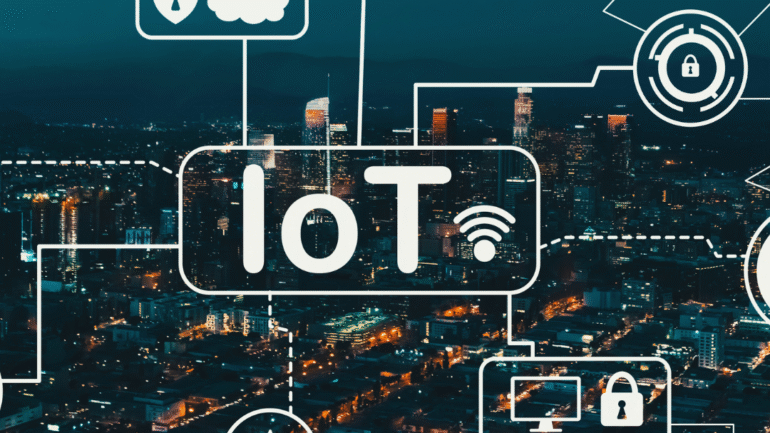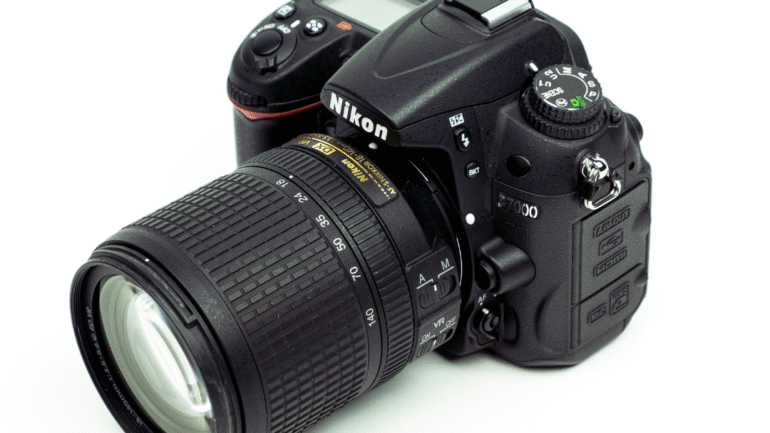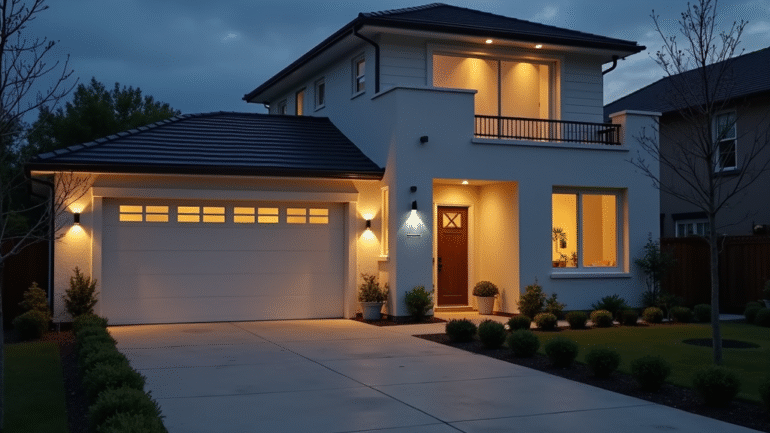The rise of the Internet of Things (IoT) is fundamentally transforming urban environments into smarter cities. By integrating IoT technology, cities can enhance efficiency, improve public safety, and foster sustainable development. Sensors, connected devices, and data analytics play key roles in optimizing city services and addressing challenges like traffic congestion and waste management.
Smart cities leverage IoT to create a more connected and responsive infrastructure. For example, smart traffic lights can adjust in real time based on vehicle flow, reducing delays and emissions. Additionally, IoT-enabled waste bins notify city services when they are full, optimizing collection routes and minimizing operational costs.
As urban populations continue to grow, the importance of adopting IoT solutions becomes even clearer. Smart cities not only aim to improve the quality of life for their residents but also promote sustainability and resilience in the face of future challenges. By harnessing the power of IoT, cities can evolve into dynamic and efficient systems that meet the needs of their inhabitants.
The Role of IoT in Building Smarter Cities
The integration of IoT in urban environments transforms cities into interconnected and efficient ecosystems. By employing intelligent systems, cities enhance their infrastructure and services, promoting a higher quality of life for residents.
Core Components of Smart City Infrastructure
Smart city infrastructure consists of several core elements that leverage IoT technology. These elements include:
- IoT Devices: Smart sensors and devices collect data on traffic patterns, energy consumption, and public safety.
- Communication Networks: Reliable connectivity solutions ensure seamless data transmission between devices and central systems.
- Data Analytics Platforms: Advanced analytics are utilized to interpret collected data, providing insights for city planning and optimization.
Interoperability among these components is crucial. It allows different systems to work together efficiently, maximizing the benefits of IoT implementations.
Key Technologies Driving Connectivity
Connectivity in smart cities relies on various advanced technologies. Key components include:
- Wireless Networks: Technologies such as 5G and LoRaWAN facilitate high-speed data transmission over large areas.
- Wi-Fi Mesh Networks: These provide robust coverage, ensuring that all parts of the city remain connected.
- Cloud Computing: Cloud platforms enable efficient data storage and processing, making it easier for municipalities to manage large volumes of information.
These technologies support the seamless integration of smart devices, enhancing communication and collaboration between different city services.
Integration of IoT Devices and Sensors
The integration of IoT devices and sensors is essential for creating smarter cities. Municipalities deploy these tools to monitor:
- Traffic Flow: Real-time data from sensors helps manage traffic signals, reducing congestion.
- Environmental Conditions: Sensors monitor air quality, noise levels, and weather conditions, allowing for timely interventions.
- Energy Usage: Smart meters track energy consumption in homes and businesses, helping optimize resources.
This interconnected approach improves operational efficiency and enables data-driven decision-making that responds to the needs of urban environments and their residents.
Enhancing Urban Efficiency and Quality of Life
Smart city solutions leverage real-time data and advanced analytics to enhance urban efficiency and improve the quality of life for residents. This involves optimizing urban systems through data-driven approaches that lead to better resource management and sustainability.
Real-Time Data Collection and Advanced Analytics
Smart cities deploy a network of sensors and connected devices that continuously gather real-time data. This data includes traffic patterns, air quality metrics, and energy consumption statistics.
Advanced analytics processes this information to identify trends and inefficiencies within urban systems. For instance, cities can monitor traffic congestion and adjust signal timings dynamically to ease flow.
These insights also aid in environmental monitoring, allowing cities to respond promptly to pollution events. Improved data visibility enables quicker reactions to urban challenges, leading to a more responsive and responsible city administration.
Data-Driven Decision Making in Urban Planning
Integrating data analytics into urban planning enhances decision-making processes. Planners use insights derived from various data sources to inform strategies related to infrastructure development and public services.
This approach enables more effective resource allocation by identifying areas that require immediate attention or investment.
By evaluating factors such as demographic trends and economic activity, planners can prioritize projects that will significantly impact quality of life. The result is a strategic alignment of initiatives that promotes sustainable urban development and meets community needs.
Improving Resource Management and Sustainability
Efficient resource management is a cornerstone of smart cities. Utilizing real-time data allows cities to optimize resource allocation for utilities like water and energy.
For instance, smart meters provide granular consumption data, enabling cities to manage supply and demand effectively. This leads to reduced waste and improved energy efficiency, contributing to environmental sustainability.
Additionally, cities can integrate renewable energy sources into their grids more effectively. By analyzing usage patterns, urban administrators can ensure that these resources are harnessed to their full potential, benefitting both the environment and residents.
Practical Applications and Benefits of IoT in Smart Cities
IoT technology transforms how cities operate, enhancing efficiency, safety, and sustainability. Specific applications address various urban challenges, from traffic congestion to waste management and energy consumption.
Traffic Management and Urban Mobility Solutions
Smart traffic lights equipped with sensors optimize traffic flow, reducing congestion. These lights adjust in real-time based on vehicle density and pedestrian activity, leading to shorter travel times. Public transportation systems utilize IoT for real-time tracking, allowing users to plan trips more effectively.
Mobility as a Service (MaaS) integrates multiple transportation modes, offering users a seamless travel experience. Smart parking solutions inform drivers of available spaces through mobile apps, minimizing search times and lowering emissions. Such innovations contribute to reduced traffic and improved urban mobility.
Waste and Water Management Innovations
IoT-based waste management employs smart sensors in bins to monitor fill levels. This data enables efficient collection schedules, optimizing routes, and reducing operational costs. Cities are increasingly adopting these systems to enhance sanitation and decrease landfill usage.
In water management, smart meters track usage in real-time, helping identify leaks promptly. This proactive approach reduces water waste and preserves resources. Cities implementing these technologies benefit from increased operational efficiency and improved resource management.
Strengthening Public Safety and Security
IoT technologies enhance public safety through smart surveillance systems that provide real-time monitoring. These systems can detect unusual behaviors, alerting law enforcement to potential threats. Environmental monitoring sensors also track air quality, enabling quick responses to hazardous conditions.
Smart streetlights equipped with cameras and sensors contribute to better urban security. They deter crime and assist in emergency response by providing valuable data to law enforcement. The integration of IoT fosters safer environments and strengthens community resilience.
Optimizing Energy Consumption and Utilities
Smart meters allow for precise energy consumption tracking, helping users to monitor and reduce usage. This technology promotes energy efficiency practices, benefiting both consumers and utility companies. It also facilitates demand-response strategies, allowing the grid to adapt to fluctuations in energy demand.
IoT-driven smart infrastructure enhances the efficiency of city utilities. Predictive maintenance relies on sensors that monitor equipment status, reducing downtime and maintenance costs. The result is a more sustainable energy ecosystem that aligns with the environmental goals of smart cities.
Challenges and Future Directions for IoT-Enabled Smart Cities
The integration of IoT technologies within urban environments brings significant challenges. Addressing these challenges is crucial for the successful development of smart city initiatives. Key areas of concern include data privacy, security, and the scalability of IoT solutions.
Data Privacy and Security Concerns
Data privacy is a primary concern for IoT-enabled smart cities. The vast amount of data collected from citizens can be vulnerable to breaches. Local governments must implement stringent security measures to protect sensitive information.
Unauthorized access to data can lead to significant privacy violations. Additionally, lapses in communication between devices may contribute to security vulnerabilities. Employing end-to-end encryption and robust authentication methods is essential.
Citizens must also be informed about how their data is used. Transparency in data practices fosters trust and encourages citizen engagement in smart city initiatives. Establishing clear regulations on data usage and privacy is necessary for sustainable growth.
Scaling IoT Solutions Across Urban Environments
Scaling IoT solutions poses challenges in diverse urban landscapes. Each city has unique infrastructural and technological needs. Solutions that work in one environment may not be feasible in another.
Collaboration between local government and technology providers is vital. This partnership can facilitate the development of scalable solutions tailored to specific urban contexts. Edge computing can play a significant role by processing data locally, reducing latency and bandwidth use.
Consistent communication across different IoT systems is also necessary. Interoperability among devices can enhance the efficiency of urban operations. Developing common standards can streamline integration and ensure that urban ecosystems remain interconnected.
The Growing Role of Artificial Intelligence and Machine Learning
Artificial intelligence (AI) and machine learning (ML) are becoming integral to IoT-enabled smart cities. These technologies can analyze vast data streams, providing valuable insights for urban planning and management.
AI can enhance service delivery by predicting citizen needs and optimizing resource allocation. For instance, smart traffic systems can improve flow based on real-time data analysis. Machine learning models can adapt to changing patterns, facilitating more responsive urban services.
Training AI systems requires careful management of data inputs to minimize bias. Ensuring that these technologies enhance citizen engagement while respecting privacy is paramount. Local governments must prioritize ethical considerations in deploying AI and ML in smart city projects.




